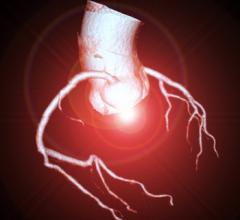January 7, 2008 - Imaging for early cardiovascular disease that causes heart attack and stroke is the focus of the High-Risk Plaque (HRP) Initiative, a new study to develop improved techniques for identifying individuals at risk for heart attacks and of advanced methods to monitor disease progression and treatment response.
The HRP Initiative, formed by Merck, AstraZeneca, Philips Medical Systems and BG Medicine, has recenlty added HealthHelp to coordinate national and market-specific clinical investigators, create safety processes and review patient images for incidental findings as part of HRP’s BioImage Study.
The BioImage Study aims to recruit approximately 7,300 asymptomatic patients with risk factors for HRP, stroke and heart disease to undergo blood tests and advanced imaging studies including ultrasound, CTs and MRIs. One of the initiative's primary goals is to determine the correlation between imaging and blood biomarkers and three-year heart-attack/stroke rates.
CT, MRI and ultrasound scans will be performed in investigational clinics established by BG Medicine in Chicago, Louisville and Miami. Radiological clinical investigators will oversee patient scanning and safety throughout the study. HealthHelp will also serve as a liaison between BG Medicine and NightHawk Radiology Services, which will be responsible for reading the scans for incidental findings that might affect patients' health.
HealthHelp has recruited the following prominent physicians to serve as clinical investigators for the BioImage Study:
Ebrahim S. Delpassand, M.D., chairman and director of Excel
Diagnostics Imaging Clinics in Houston
James T. Bui, M.D., assistant professor of radiology,
University of Illinois at Chicago
Albert Seow, M.D., professor of radiology, University of
Louisville School of Medicine
Hermes J. Florez, M.D., MPH, Ph.D., assistant professor of
clinical medicine, University of Miami Miller School of Medicine
For more information: www.healthhelp.com


 December 11, 2025
December 11, 2025 









